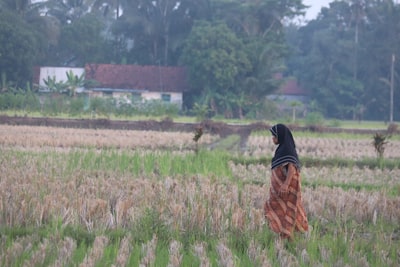Indonesia’s US Wheat Deal: What It Means for Global Trade, Food Security, and Commodity Markets in 2025
In July 2025, Indonesia—the world’s second-largest wheat importer—announced plans to boost US wheat purchases as the country maneuvers for a favorable trade deal and braces for evolving global tariffs. With a $1.25 billion memorandum of understanding (MOU) extending through 2030, Indonesia seeks stability amid market volatility, shifting supply chains, and rising food security concerns.
The Growing Role of Wheat Trade Between Indonesia and the US
Key keyword: Indonesia wheat imports, US wheat exports, global wheat trade
Indonesia’s agreement to import a minimum of 1 million tons of US wheat annually by 2026 represents more than a trade statistic; it underscores the delicate balancing act nations must perform in a time of volatile commodity prices and shifting international alliances. As the US Department of Agriculture projects Indonesia’s annual wheat needs at around 12 million tons, the US deal carves just a slice, with the bulk coming from Australia and Canada. But the agreement is strategic, reflecting wider anxieties about supply chain reliability and the geopolitics of grain.
Why Are Wheat Imports Critical to Indonesia’s Food Security?
Indonesia relies heavily on imported wheat to meet its population’s growing demand for flour—used in everything from noodles to baked goods and processed food. Domestic cultivation is minimal due to unsuitable climate conditions, making Indonesia vulnerable to global price swings and international trade policies.
Key issues include:
- Food inflation due to global supply disruptions
- Tariff and trade restrictions impacting affordability
- Volatility from climate shocks abroad
By diversifying supply sources, especially from major producers like the US, Indonesia aims to insulate itself from external shocks and ensure stable food prices at home.
US Wheat: Competitive Advantages in a Changing Landscape
Related keywords: US vs Australia wheat, wheat quality comparison, price competitiveness, global food security
While Australian wheat has historically dominated Indonesia’s import market (owing to proximity and pricing), US wheat offers distinct advantages in terms of quality and procurement stability. Seven major suppliers—including global giants Cargill and Bunge—will compete for market share based on price and service under the new MOU.
Emerging questions for 2025:
- Will US wheat become more competitive amid rising costs and tariffs for Australian grain?
- How can Indonesia leverage US partnerships for better trade conditions beyond wheat (corn, soybeans)?
- Can such deals serve as a model for other Southeast Asian economies pursuing agricultural security?
What the Wheat Deal Reveals About Tariff Talks and Food Trade Trends
Key keyword: global tariff deadlines, food trade negotiations, Southeast Asia commodity imports
The looming tariff deadline mentioned by Indonesian officials highlights the ongoing struggle to secure favorable terms as trade blocs and protectionist policies become more common. Agricultural commodities like wheat, corn, and soybeans are at the forefront of these negotiations, with food security now a top political priority for many countries.
By making clear pledges to buy US wheat, Indonesia is signaling both its openness to international cooperation and its pragmatism in managing economic risks. Similar MOUs for other key imports—like corn and soy—are also in the pipeline, hinting at a broader realignment in Indonesia’s agribusiness strategy.
2025 Trends to Watch
- Diversification of import sources to reduce over-reliance on a few countries
- Agreements that guarantee minimum purchase volumes to manage price and supply volatility
- Technology partnerships for food processing, logistics, and risk management
Frequently Asked Questions (FAQ)
1. Why doesn’t Indonesia grow its own wheat?
Indonesia’s tropical climate makes large-scale wheat cultivation nearly impossible, so it must rely on imports.
2. Who are Indonesia’s biggest wheat suppliers?
Australia, Canada, and the US—though the new MOUs may gradually increase the US’s share.
3. How does this deal impact Indonesian flour prices?
More stable and diversified wheat supply should help moderate flour price volatility, though global market shifts still play a significant role.
4. What other commodities are included in these new pledges?
Upcoming agreements target key crops like corn and soybeans, vital for food and feed industries.
Conclusion: What’s Next for Indonesia, the US, and Global Grain Markets?
Indonesia’s expanded wheat partnership with the US is about more than just grain—it’s a proactive move that touches everything from food security to geopolitical leverage in trade negotiations. As global food demand intensifies and supply chains face new stresses in 2025, Indonesia’s strategy of forging reliable, long-term commodity alliances could serve as a benchmark for other emerging economies.
For readers: To stay ahead in understanding agri-food trade trends, keep an eye on evolving MOU agreements, shifting tariffs, and how developing nations use strategic imports to shield themselves from global shocks. What happens in Jakarta’s wheat market today may reshape dinner tables worldwide tomorrow.

Comments
No comments yet. Be the first to comment!